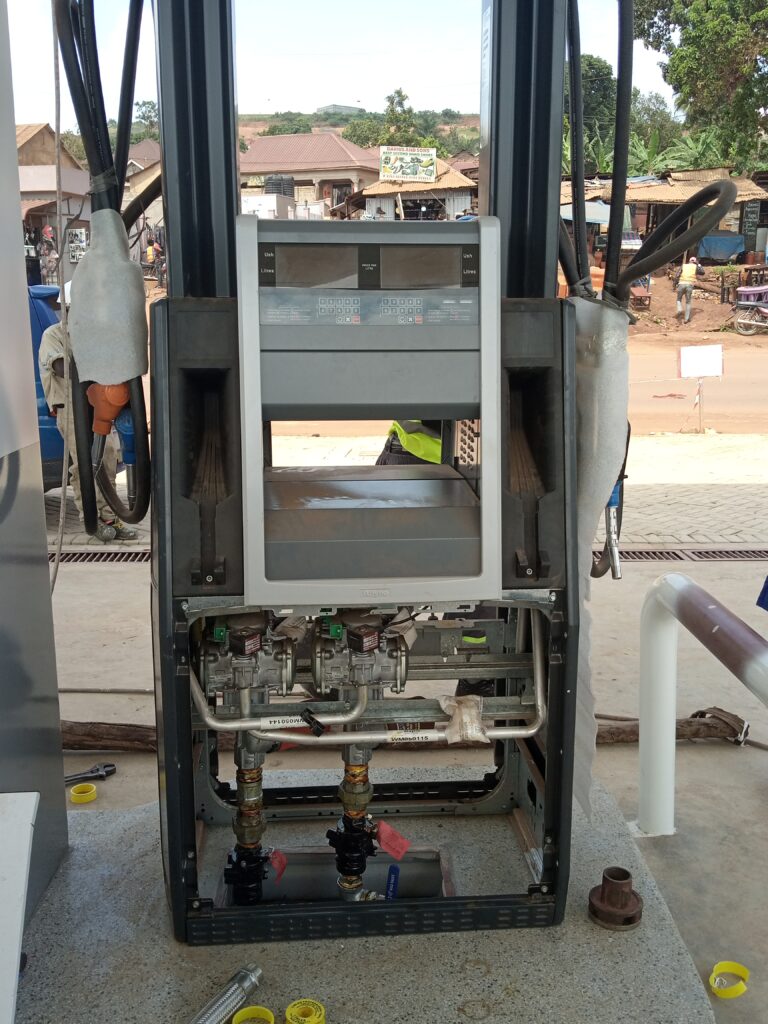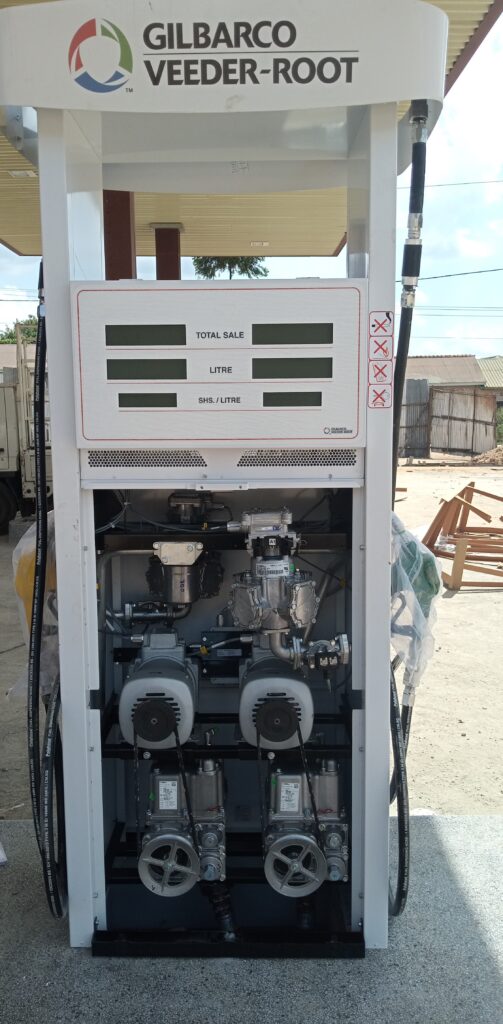At KK Petroleum Solutions, we understand the importance of a well-managed schedule to ensure that each team is on-site only when needed, and they can get to work on their portion of the job with no delays.
At KK Petroleum solutions we install fuel dispensers and petrol station pumps, contact us for more information


Here are the basic steps for installation of a fuel dispenser.
- installation of the shoring prior to excavation: Shoring is a temporary structure used to support the sides of an excavation to prevent cave-ins. Before excavation begins, shoring is installed to ensure the safety of workers.
- Excavate the area and prepare for Underground Storage Tank placement with a layer of stone and anchor stones: The excavation process involves digging a hole for the Underground Storage Tank (UST) to be placed in. A layer of stone is laid down as a base, and anchor stones are placed around the perimeter of the hole to secure the tank.
- Installation of the Underground Storage Tank and backfill to the top of the tank: The UST is then lowered into the hole and secured in place. Once the UST is in place, it is backfilled with soil up to the top of the tank.
- Remove the shoring material from the perimeter of the area: The shoring that was installed in step one is removed from the excavation area.
- Dig trenches from the submersible turbine pump sumps to the fuel dispenser area: Trenches are dug to connect the submersible turbine pump sumps, where fuel is stored, to the fuel dispenser area.
- Install submersible turbine pumps in manway openings: Submersible turbine pumps are installed in the manway openings of the UST to transfer fuel to the dispenser area.
- Run product piping from sumps to dispenser areas: Pipes are run from the submersible turbine pump sumps to the dispenser area to transport fuel.
- Run electrical conduits from submersible turbine pump manways back to building: Electrical conduits are installed from the submersible turbine pump manways to the building.
- Run electrical conduits from dispenser pans back to building: Electrical conduits are installed from the dispenser pans to the building.
- Product piping is pressure tested for leaks: The piping system is pressure tested to ensure there are no leaks.
- When the pressure test is successful, trenches and tanks are backfilled with crushed stone: Once the pressure test is successful, the trenches and UST are backfilled with crushed stone.
- Install wiring into the conduits: Electrical wiring is installed into the conduits.
- Install concrete pad: A concrete pad is poured to create a stable surface for the fuel dispensers.
- Set dispensers onto islands and connect to piping: The fuel dispensers are installed onto islands and connected to the piping system.
- Install probes and sensors into tanks, sumps, and dispenser pans: Probes and sensors are installed to monitor the level of fuel in the UST, sumps, and dispenser pans.
- Terminate wiring into relay boxes, panels, and automatic tank gauge console: Wiring is terminated into relay boxes, panels, and automatic tank gauge consoles.
- Deliver product into tanks: Fuel is delivered into the UST.
- Energize the dispensers and submersible turbine pumps and purge air out of product lines: The fuel dispensers and submersible turbine pumps are energized and any air in the product lines is purged.
- Pave around the perimeter of tank pads: The perimeter of the tank pads is paved to create a finished look.
- Site is complete: The site is now complete and ready for operation.
At KK Petroleum Solutions, we have the expertise and experience to manage these steps efficiently and effectively, ensuring that your project is completed on time and on budget. Contact us today to learn more about our fueling equipment update services.

